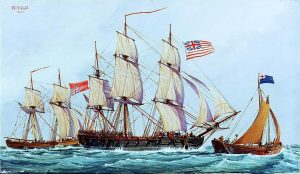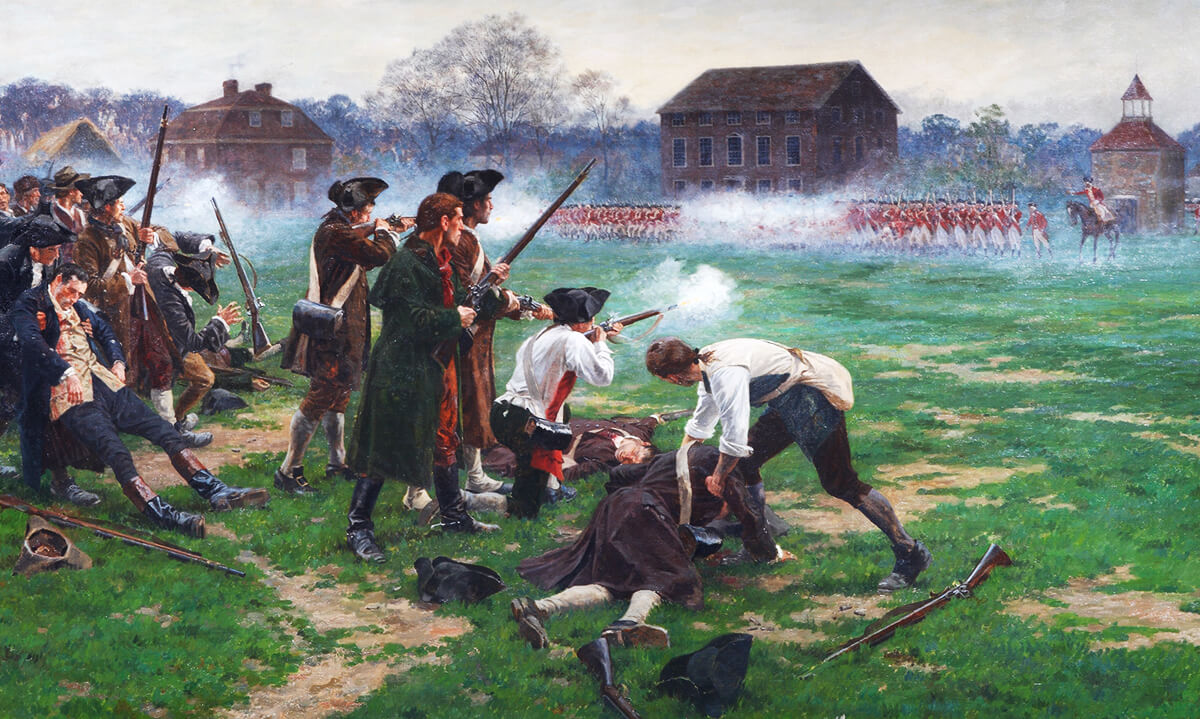The U. S. Navy dates its origins back to 1775. It began with an August 26, 1775 instruction from Rhode Island to their representatives in the Continental Congress to call for the establishment of a navy, explaining that “every principle, Divine and human, require us to obey that great and fundamental Law of Nature — self preservation — until peace shall be restored upon constitutional principles.”
 The Continental Congress, not in session at that time, took up the issue when it returned and on October 13, 1775, the Continental Navy was created. By the end of the War for Independence, the Navy peaked at 31 ships and was disbanded when the Treaty of Paris was signed in 1783.
The Continental Congress, not in session at that time, took up the issue when it returned and on October 13, 1775, the Continental Navy was created. By the end of the War for Independence, the Navy peaked at 31 ships and was disbanded when the Treaty of Paris was signed in 1783.
This action, however, left American commercial ships in the Mediterranean unprotected. So in 1784, five Muslim nations began attacking American ships and killing and enslaving sailors. With no Navy to deter these terrorists, the United States government’s only recourse was to make huge extortion payments to the terrorists in exchange for their promise to limit future attacks. President George Washington, infuriated by this policy, requested that Congress rebuild the Navy. Congress agreed and President John Adams executed that plan. President Thomas Jefferson then used the Navy to launch America’s first war on Muslim terrorists, defeating them and ending their attacks against American citizens and interests.
 Following this, the Navy slowly shrank in size until it numbered only 40 ships by the beginning of the Civil War (the Confederates had none). The War resulted in a naval build up on both sides, with several major naval battles. (Pictured on the right, is the Battle of Hampton Roads, the first encounter between ironclad armored ships.)
Following this, the Navy slowly shrank in size until it numbered only 40 ships by the beginning of the Civil War (the Confederates had none). The War resulted in a naval build up on both sides, with several major naval battles. (Pictured on the right, is the Battle of Hampton Roads, the first encounter between ironclad armored ships.)
After the War, the Navy once again shrank, but during WWII, it was rebuilt. By the end of 1945, the U. S. Navy consisted of over 1,300 major combat ships (such as battleships, cruisers, aircraft carriers, destroyers, and submarines), 90,000 mine laying ships and landing craft, with over 3.3 million naval personnel.
Military cutbacks under the Obama administration once again dramatically reduced the size of the Navy, leaving only 275 ships and 330,000 active duty naval personnel, with 100,000 reserves.
The pattern is clear: when we dramatically cut the military, we invite outside attacks. This historical pattern is something the present administration seems to have recognized, and Trump has pledged to rebuilding the U.S. Navy back to over 300 deployable vessels.
So today, while remembering the origins of the U. S. Navy, let’s pray for all those that serve in that branch — and indeed, for those who serve in all branches of our Armed Forces to keep Americans safe around the world!
Still looking for answers? Visit our FAQ page
More Resources
Know the Truth and Protect Your Freedoms.
Still looking for answers? Visit our FAQ page
Stay Informed with the Latest Resources
Enter your email address to receive our regular newsletter, with important information and updates right in your inbox!










